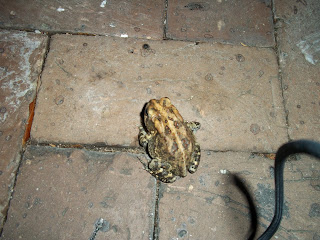
Hyla cinerea was selected to serve as our class mascot because it's a local, lowcountry species that we've seen in the field and, in many cases, outside of class.
In the event that Hyla cinerea is unable to complete its duties as class mascot, its term will be completed by the first runner-up, Alligator mississippiensis.

Alligator mississippiensis is another species we've had the pleasure of seeing in the field. Alligators are our only crocodylian species and a conservation success story.
Thanks for all of your entries, thanks for a great semester, and happy future herping! (A. Welch, SC)












